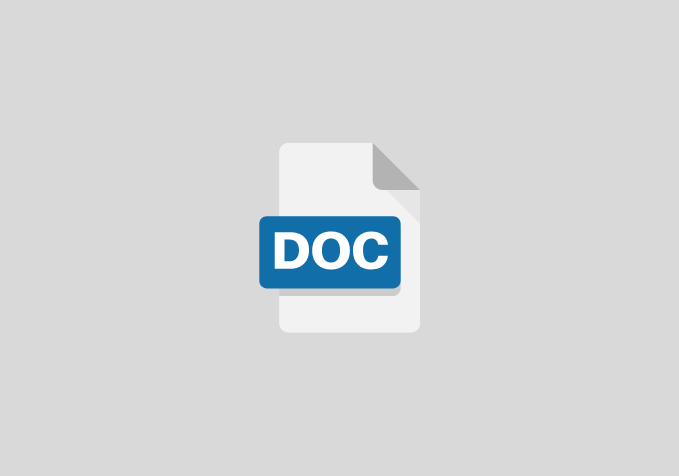A Proposal Utilization of Modern Communication Tools Among Secretaries in Awka South LGA, Anambra State
CHAPTER ONE
Objective of The Study
The overall aim of this essay is to assess and investigate secretaries and how they utilize modern communication tools. Whereas the specific objectives of the study include:
- To examine how effective is the utilization of modern communication tools in Awka South LGA, Anambra State
- To indicate the kinds of role utilization of modern communication tools play in achieving overall gales and strategic plan.
- To examine the secretaries, whether they have appropriate skills or not.
CHAPTER TWO
Literature Review
Secretaries Roles and Responsibilities in Contemporary Organization
The secretarial function, though a supportive function, requires a large amount of initiative, tact and resourcefulness to succeed. Ugiagbe (2002) defined a secretary as an assistant to an executive, possessing mastery of office skills and ability to assume responsibility without direct supervision, who displays initiative, exercises judgement, and makes decisions within the scope of his/ her authority. Boladele (2002) expressed that a secretary is a warm, endlessly helpful and under-standing individual whose sole aim is to alleviate, solve, prevent or soften problem workload and upsets for his/her executive. He/she is the means by which the executive initiates, handles and complete a project. According to Onifade (2009), a secretary is an assistant to a manager. Apart from the traditional responsibilities, such as typing, taking dictation and transcribing, managing records, receiving, storing and retrieving information or operating the computer, attending meetings, answering telephone calls, he now carries out research, prepares the manager’s itinerary, makes travel bookings and hotel reservations, supervises the junior workers, and makes some decisions using his initiatives. He should be able to answer some questions on behalf of the boss. For example, a client who wants the price of a product should not wait to see the boss. A secretary who is familiar with the company’s policies, price list and handbooks should relieve the boss of such burden by providing accurate information. He should be able to coordinate the administrative activities and organize the office for efficient performance. He should be able to use the internet and train new staff on the computer. The secretary is a member of a team in the workplace and therefore should always be cooperative and supportive. He should be able to write and present reports and disseminate information using websites and e-mail. He now shares with the manager the responsibilities that were hitherto reserved for the manager.
CHAPTER THREE
Information Management in Organizations
Information management is a way of monitoring and providing key members of an organization with data, facts and ideas used in its operation. It is a formalized procedure for providing information at all levels, in all functions, with appropriate information, from all relevant sources (both internal and external) to the organization which enables them to make timely and effective decision for planning, directing, and controlling the activities for which they are responsible for. It is also the collection, processing, organization, accessing and utilization of information from one or more sources and the distribution of that information to one or more audiences. Information management means the organization of and control over the structure, processing and delivery of information. Good information management is getting the right information to the right person in the right format at the right time.
CHAPTER FOUR
Research Methodology
Research Design
This shows sequentially the methods and procedures used by the researcher to enable her achieve the objectives of the study.
A survey design will be used to get a fair representation of opinion in the population to avoid sampling bias.
Population
The population will be secretaries in the state secretariat.
Sample Size
The sample size will be 20 secretaries from the population.
Method Of Data Analysis
The data for this study will be collected, sorted and interpreted in tables by using simple statistical tools. However, the researcher will carefully avoid the use of rigorous and ambiguous statistical models in analyzing the data for the work.
CHAPTER FIVE
REFERENCES
- Ahituv, N., Neumann, S., & Riley, H. N. (1994). Principles of information systems for management (4th Ed.). Dubuque, IA: Wm. C. Brown Communications.
- Awad, E.M., & Gotterer, M.H. (1992). Database management. Danvers, MA: Boyd & Fraser. Banerjee, U.K., & Sachdeva, R.K. (1995). Management information system: A new frame work. New Delhi: Vikas Publishing House.
- Davis, G.B., & Olson, M.H. (1985). Management information systems: Conceptual Foundations, structure, and development. New York: McGraw-Hill.
- Davis, G.P., 1974, Management Information Systems: Conceptual Foundations, Structure and Development, M, Graw-Hill, New York
- Imboden, M. (1980) Managing information for rural development projects. Paris: Organization for Economic Co-operation and development.
- Keen, P.G.W., & Morton, M.S.S. (1978). Decision support systems. Reading, AM: Addison- Wesley.
- Kotter, John, P., 1996, Leading change, Harvard business school press, Boston, MA Kroenke, David, 1992, Management Information System, McGraw-Hill, New Delhi
- Laudon, K., C., and J.P., Laundon,1998, Management Information Systems: Organization and Technology, Practice Hall of India, Nedelhi
- Lucas, H.C., Jr. (1990). Information systems concepts for management. New York: McGraw- Hill.


